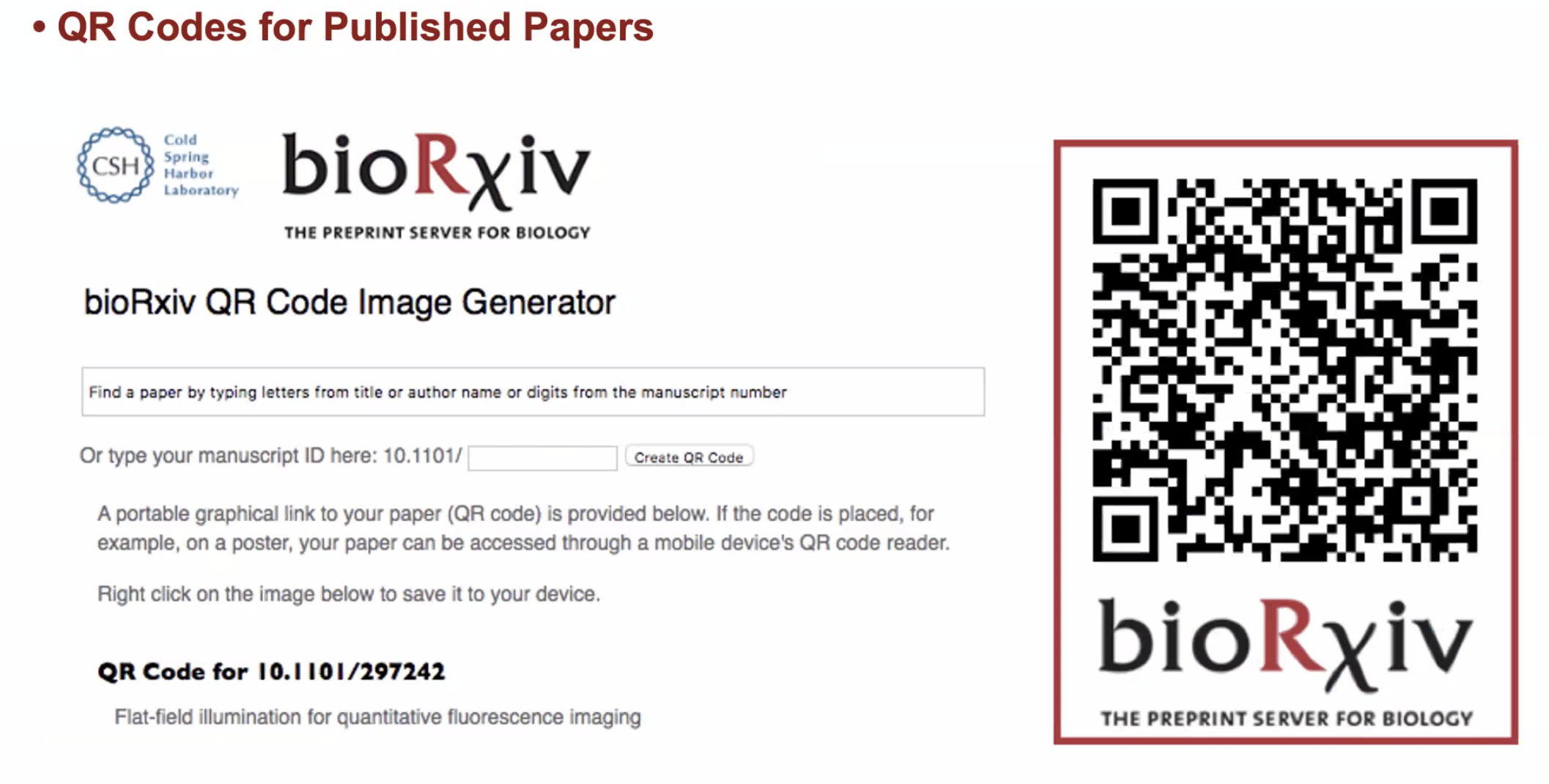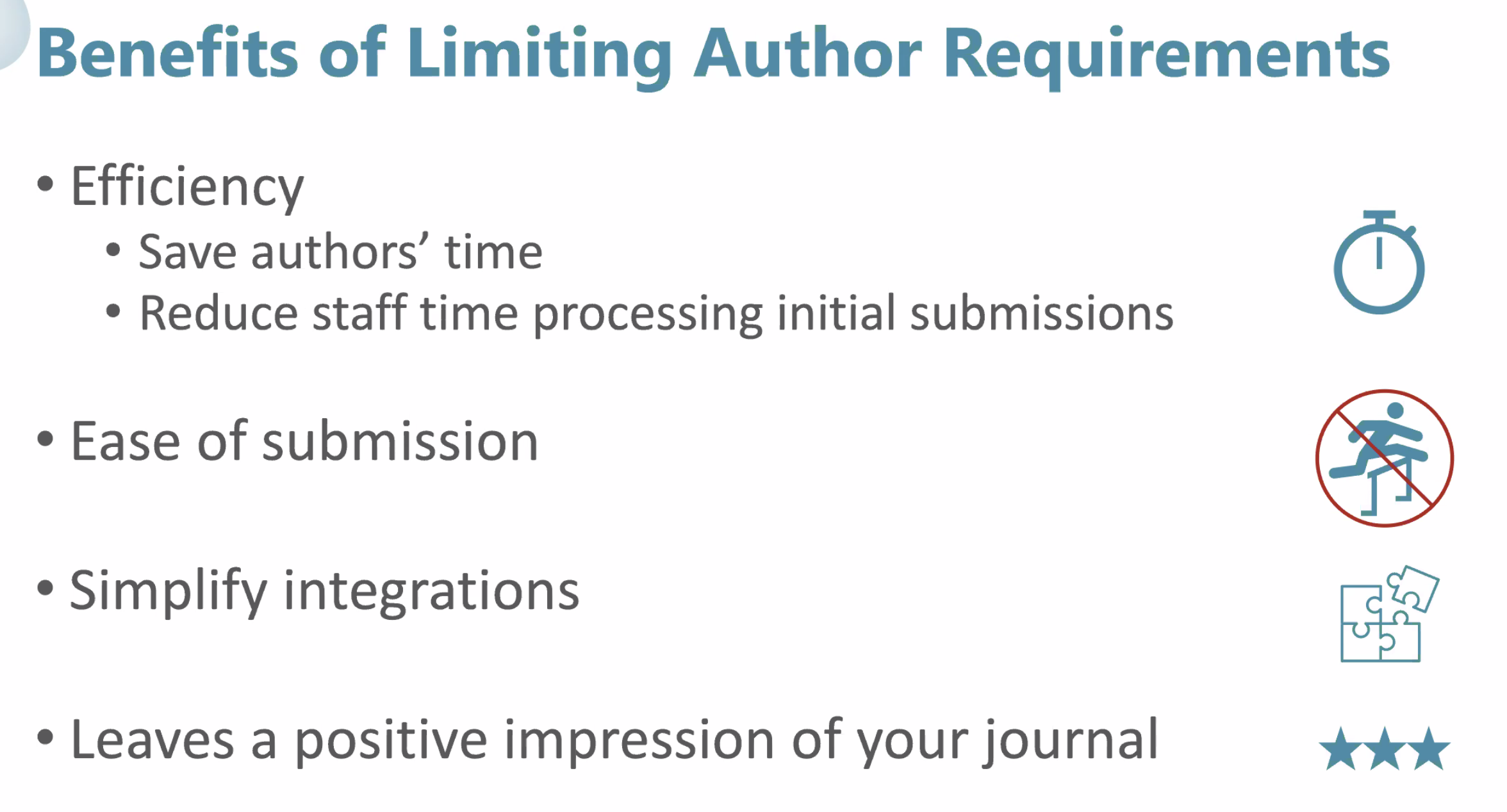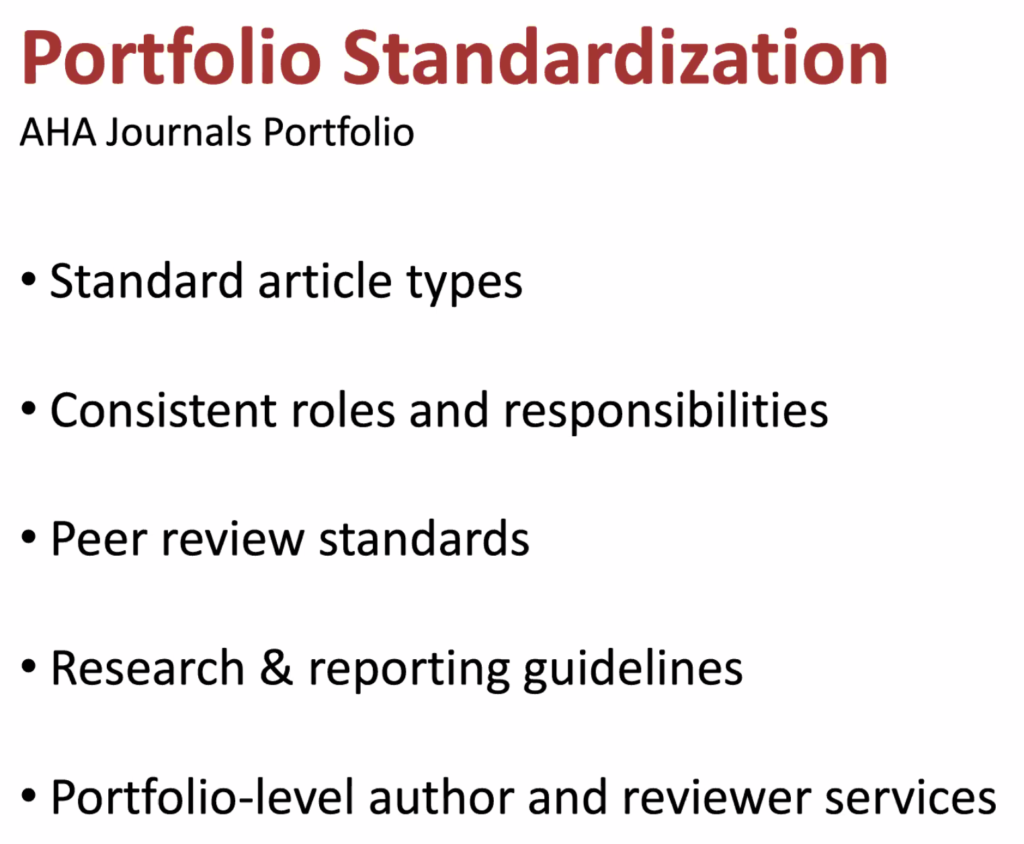MODERATOR:
Helen B Atkins
Senior Manager, Journal & Product Support
American Chemical Society
Madison, Wisconsin
SPEAKERS:
Jonathan Schultz
Director, Journal Operations
American Heart Association
Catonsville, Maryland
Virginia C W Ramsey
Managing Editor, Kidney360
American Society of Nephrology
Round Rock, Texas
Kevin-John Black
Product Lead
Cold Spring Harbor Laboratory
Daly City, California
REPORTER:
Tony Alves
Hopedale, Massachusetts
The session “Progress Toward More Author-Friendly Submissions” was held virtually on May 5, 2021. Moderated by Helen Atkins, Senior Manager, Journal & Product Support at the American Chemical Society, the session featured presentations from Kevin-John Black, Product Lead at Cold Spring Harbor Laboratory; Virginia Ramsey, Managing Editor of Kidney360 at the American Society of Nephrology; and Jonathan Schultz, Director, Journal Operations at the American Heart Association.
The first presentation, “Author Fatigue and Click Reduction,” was given by Kevin-John Black. He gave a brief overview of bioRxiv (https://www.biorxiv.org)1 and medRxiv (https://www.medrxiv.org),2 pointing out how submitting to a preprint server is similar to submitting to a peer-reviewed journal. During the manuscript submission process there is a natural tension between the need to gather useful information from authors and the desire to make it simple for authors to submit their research for consideration. Black pointed out that submission systems can help journal staff accomplish both of these objectives and that, although it can be tempting to utilize these systems to gather lots of information early on in the process, it is best to limit the required metadata to the most basic information needed to conduct an initial peer review, such as title, author list, abstract, and of course, the manuscript file, figures, and tables. Black also discussed a useful feature in the submission system they use, called BenchPress (https://www.highwirepress.com/solutions/highwire-submissions/benchpress),3 which allows the author to upload a spreadsheet containing all of the author names and their associated data so that the submitting author doesn’t have to enter each author’s information individually.
Reducing author fatigue isn’t just about making the submission process easier, it is also about making other tasks less onerous. Black highlighted several other automated functions that are part of the bioRxiv and medRxiv workflow that reduce author involvement. PDFs are created automatically, using the author’s submitted files, and then a vendor creates an HTML version of the manuscript to be posted, without any involvement from the author. The system allows the author to send their preprint on to a participating journal or peer-review service automatically. When a preprint gets accepted and published by a journal, the system automatically updates the record with a DOI link to the version of record through an integration with Crossref (https://www.crossref.org).4 Another fun feature that helps the author easily direct people to their preprint and published article is the utilization of QR codes, which are generated for any manuscript that is posted on either bioRxiv or medRxiv.

Virginia Ramsey went second with a presentation called “Author-Friendly Requirements.” She first discussed why it is good to limit author requirements during the submission process. Saving the author time shows that you value the author and also recognize that their time is valuable. Similar to Black, Ramsey recommended reducing submission requirements, pointing out that custom questions can complicate the process.

For the initial submission, think about which requirements need to be kept and which can be eliminated, and include only the minimum needed for making a first decision regarding publication. She asked several questions: Do you really need references formatted to journal style at this point? Is font size important? Do the authors need to sign all of the forms now? Ramsey suggested that the higher the rejection rate of the journal, the easier your submission process should be. Customize steps for article types; there may be standard steps that are appropriate for original research that just don’t make sense for brief reports. Also get editors to weigh in on requirements since they also are authors and can provide insight into the process from the author’s perspective. If authors don’t invest too much time at the beginning, it reduces the sting of rejection.
It is useful to look at the peer-review requirements and think about the minimal information needed for review. Are you asking for information from the author that doesn’t actually get used by reviewers? If so, eliminate it. But don’t compromise your review process. If you choose to simplify the submission process by removing some requirements, make sure that you also adjust your peer-review instructions.
Ramsey also recommended utilizing platform features. Her journals use ScholarOne (https://clarivate.com/webofsciencegroup/solutions/scholarone/)5 and eJournalPress (https://www.ejournalpress.com),6 which allow nested questions, have autocomplete functions, auto-extract metadata, and allow the administrator to create pre-filled fields. The integration of standardized lists that authors select from, such as CRediT (http://credit.niso.org),7 Ringgold (https://www.ringgold.com),8 and Funder Registry (https://www.crossref.org/services/funder-registry),9 are helpful.
Once you have changed the requirements, let authors and reviewers know about what has been changed and why. In particular, review any forms that might ask for information that is no longer required from authors.
The final presentation, “Improving the Author Experience at the Portfolio Level,” by Jonathan Schultz, addressed author-friendly submissions from a broader perspective, which included cross-publication standardization. Historically, the journals of the American Heart Association (AHA; https://www.heart.org)10 encouraged individual editors and editorial teams to work independently, each developing their own independent requirements; these could include different editorial policies, author instructions, and submission requirements. However, when the AHA moved to a cascading-workflow model, in which a journal offers authors the opportunity to “cascade” or transfer rejected submissions to another, more appropriate AHA journal, they realized that a more consistent set of policies and requirements would be needed.
This portfolio approach meant that authors needed consistency across the collection of journals and that such a system would also make cascading more efficient.

Author instructions and templates had to be standardized, as did editorial policies. Schultz also mentioned that the submission pages in their submission tracking system, eJournalPress, had to be reviewed and simplified.
An efficient cascading workflow relies on standardization throughout the entire peer-review process, not just at submission. Schultz recalled how they needed to standardize article types across journals. They established consistent roles so that people with similar titles had similar responsibilities. Each journal had to adhere to similar peer-review standards. They also established portfolio-wide research and reporting guidelines. Even author and reviewer services had to be handled on the portfolio level so that a consistent message and the same assistance were being provided, regardless of which journal the researcher was dealing with.
Schultz highlighted how author disclosure of conflicts of interest (COI) is one of the most time-consuming and most complained about submission tasks. It is extremely important and also commonplace, especially for medical journals. Authors get frustrated by COI disclosure because they often find themselves repeating information for each journal that they submit to. Schultz introduced a new third-party system called Convey (https://www.convey.org),11 developed by the Association of American Medical Colleges, which was designed to help save authors time when disclosing conflicts of interest. Convey is a web-based financial disclosure platform that allows researchers to aggregate their COI disclosures in one place, where that information can be maintained and reused. The AHA is rolling Convey out to all of the journals in its portfolio, which should make providing COI information much easier.
References and Links
- https://www.biorxiv.org/
- https://www.medrxiv.org/
- https://www.highwirepress.com/solutions/highwire-submissions/benchpress/
- https://www.crossref.org/
- https://clarivate.com/webofsciencegroup/solutions/scholarone/
- https://www.ejournalpress.com/
- http://credit.niso.org/
- https://www.ringgold.com/
- https://www.crossref.org/services/funder-registry/
- https://www.heart.org/
- https://www.convey.org/
